A Q&A with illustrator and creative educator Grace Holliday
by Grace Holliday, Illustrator
Meet Grace Holliday, an illustrator, mark-maker and creative educator who illustrates using a combination of abstract patternmaking and figurative drawing. Over the last year we have partnered up with Grace and The Peel Institute, to work with an Islington community group on a creative project.
We speak to Grace about her illustration practice, her favourite artists and why she collects pens, even if they are running out of ink.
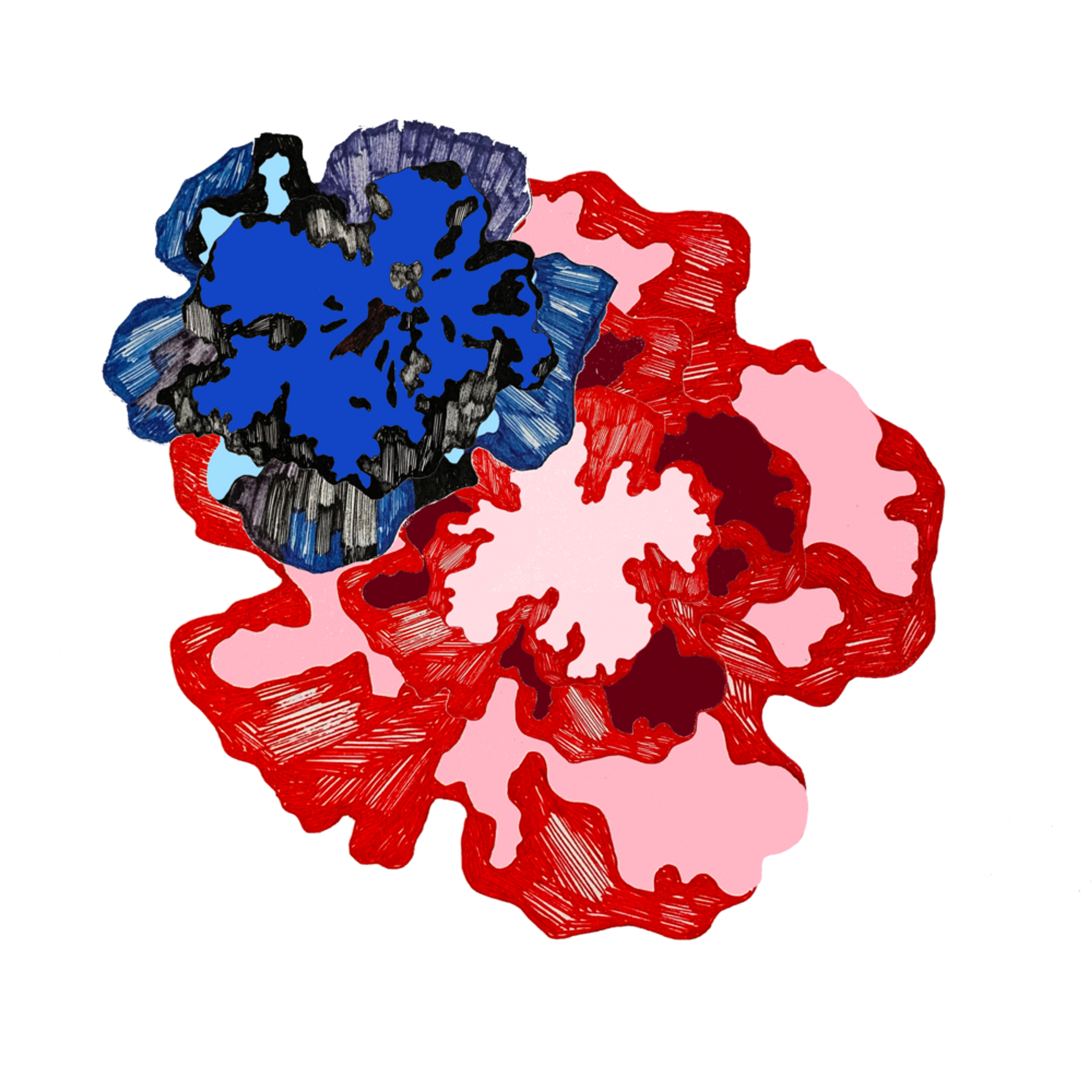
What inspires your work?
Mainly my love of collecting and everyday storytelling. Nature, heritage and fashion are constant sources of inspiration across my projects.
As an illustrator I love to explore and gather as I go - the people I meet and places I journey through feed into my ideas. I refer to the endless folders and sketchbooks of observational ‘swatches’ I’ve hoarded along the way – these can be my own drawings on scraps of paper or postcards from car boot sales!
My practice is very much lead by the materials I use - sometimes it's purely the colour or texture of the media I’m using rather than a theme that inspires me to make something. My work can be quite abstract and instinctive.
What kind of materials do you use?
I am an avid collector and keeper of pens. Pens are the main tool that I use, however I also combine printmaking processes with some elements of painting too. I very much celebrate the handmade in my practice and always want to showcase the human traces evident in processes where possible. I love the bleeding of pens and the different gestural marks that they can achieve depending on how they are handled.
I often label my pens in the studio, rejecting the idea that a pen is ‘finished’ at the point it begins to run out - this is when a whole spectrum of tone opens up.
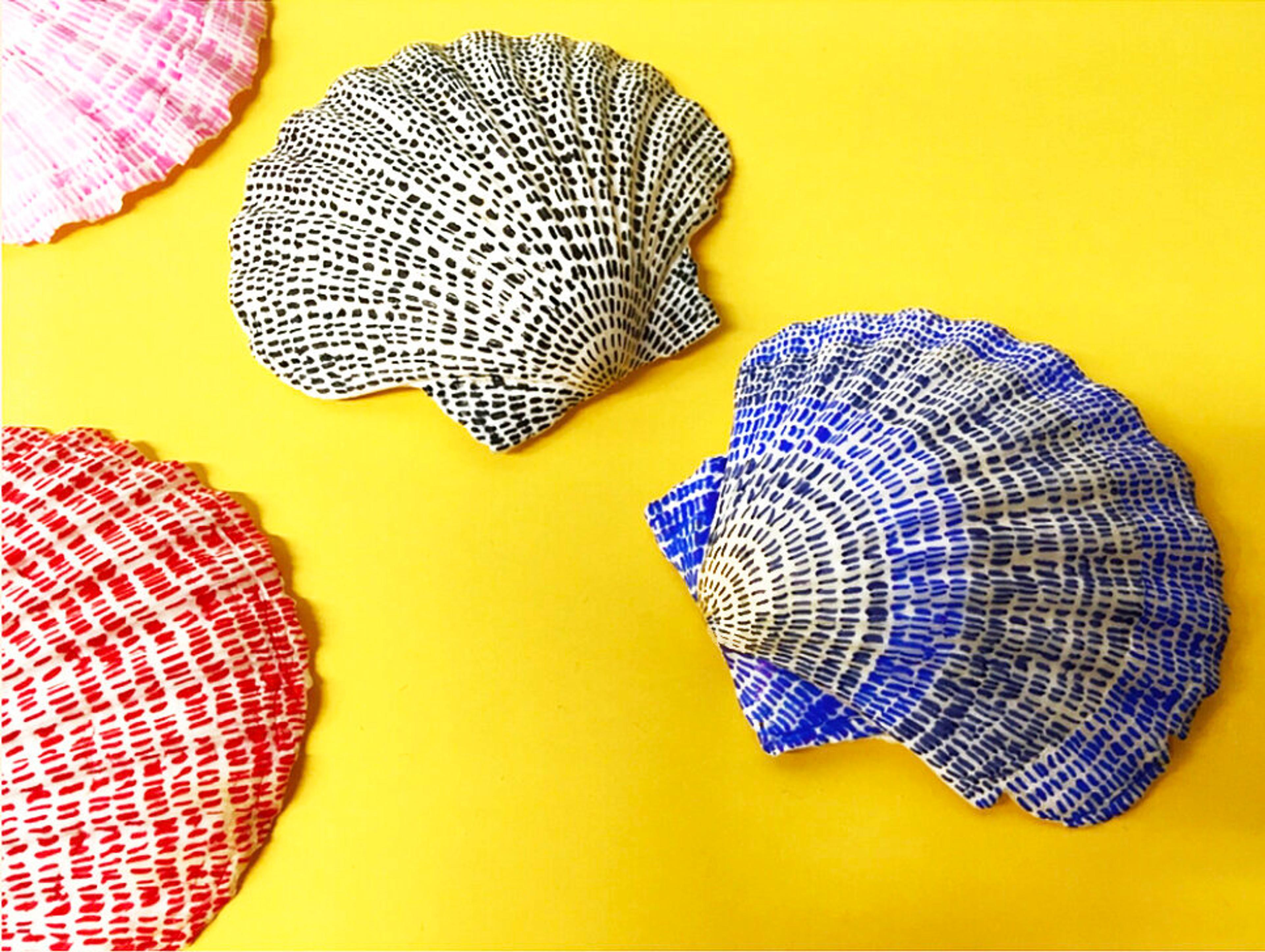
What is it that excites you most about your work?
I love the diversity of what I do. The solitary aspect of being a studio illustrator is something I find very peaceful and fulfilling - working to a range of briefs simultaneously and creating commissions that are all so different. From the figurative to abstract, surface designs, narrative pieces and everything in between! The teaching side of my practice is then something entirely different, but has given me so many amazing opportunities to meet and teach amazing students (with an age range of two to 101 years old).
Do you work from a studio?
Yes, I work from my studio in South London. A place where I produce my illustration work and also house my various collections of antiques / vintage objects (treasures).
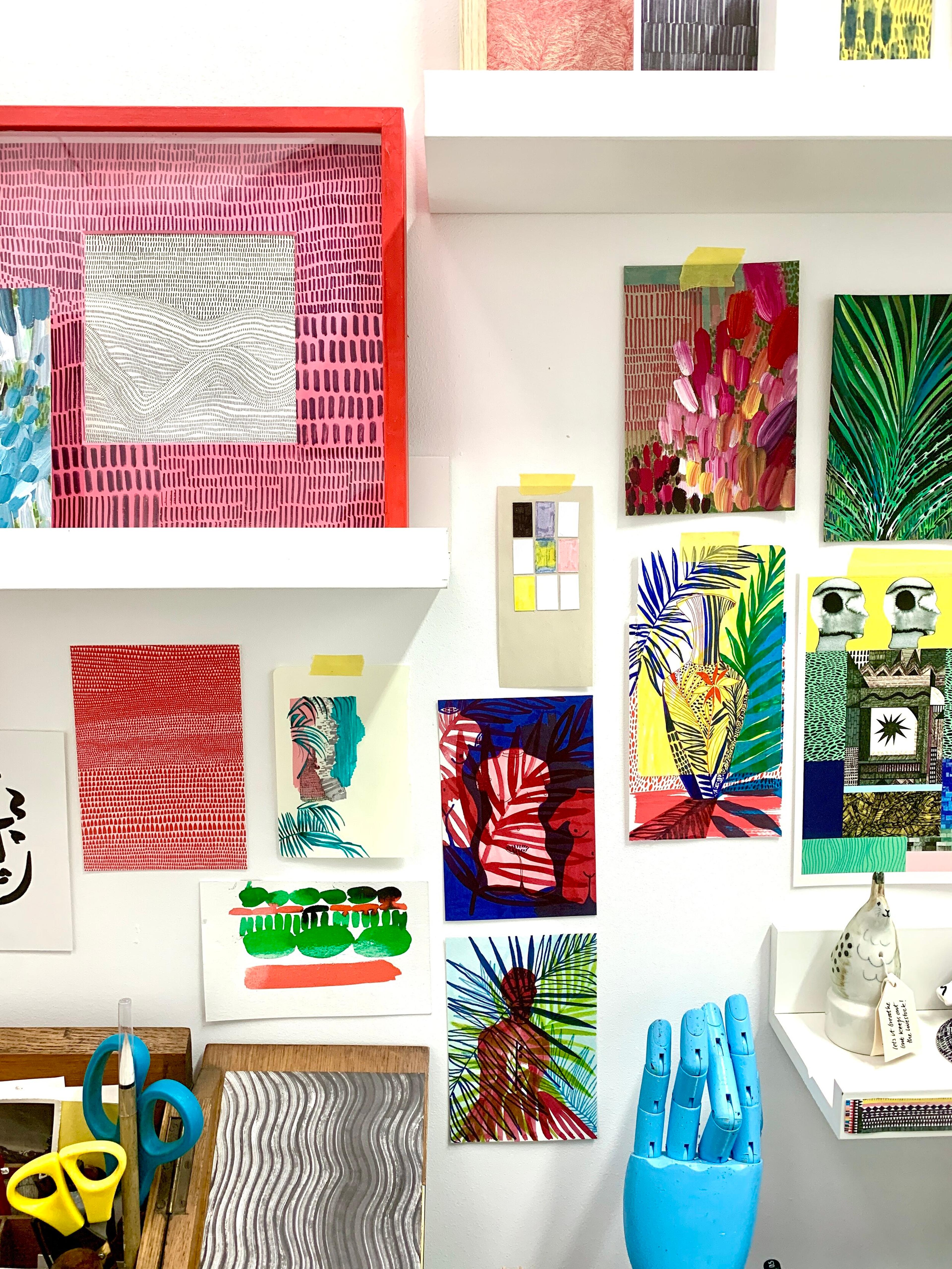
What’s your biggest challenge as an illustrator?
It can be aligning a vision with the client who is commissioning work from you. There are times that the brief they set is not something that you feel is necessarily right or is perhaps too strict in what it needs to look like. That means as an illustrator you can provide ideas that meet the needs of the commission, whilst offering up fresh, creative and very contemporary illustration at the same time. This is a challenge but something exciting at the same time, it’s a huge privilege.
You’ve worked on several collaborations, what was one of your most recent?
I have recently enjoyed the opportunity to revisit printing my marks onto textiles - something I always seek out. I love creating dimension and objects with my drawings, transforming them into collections of objects is great.
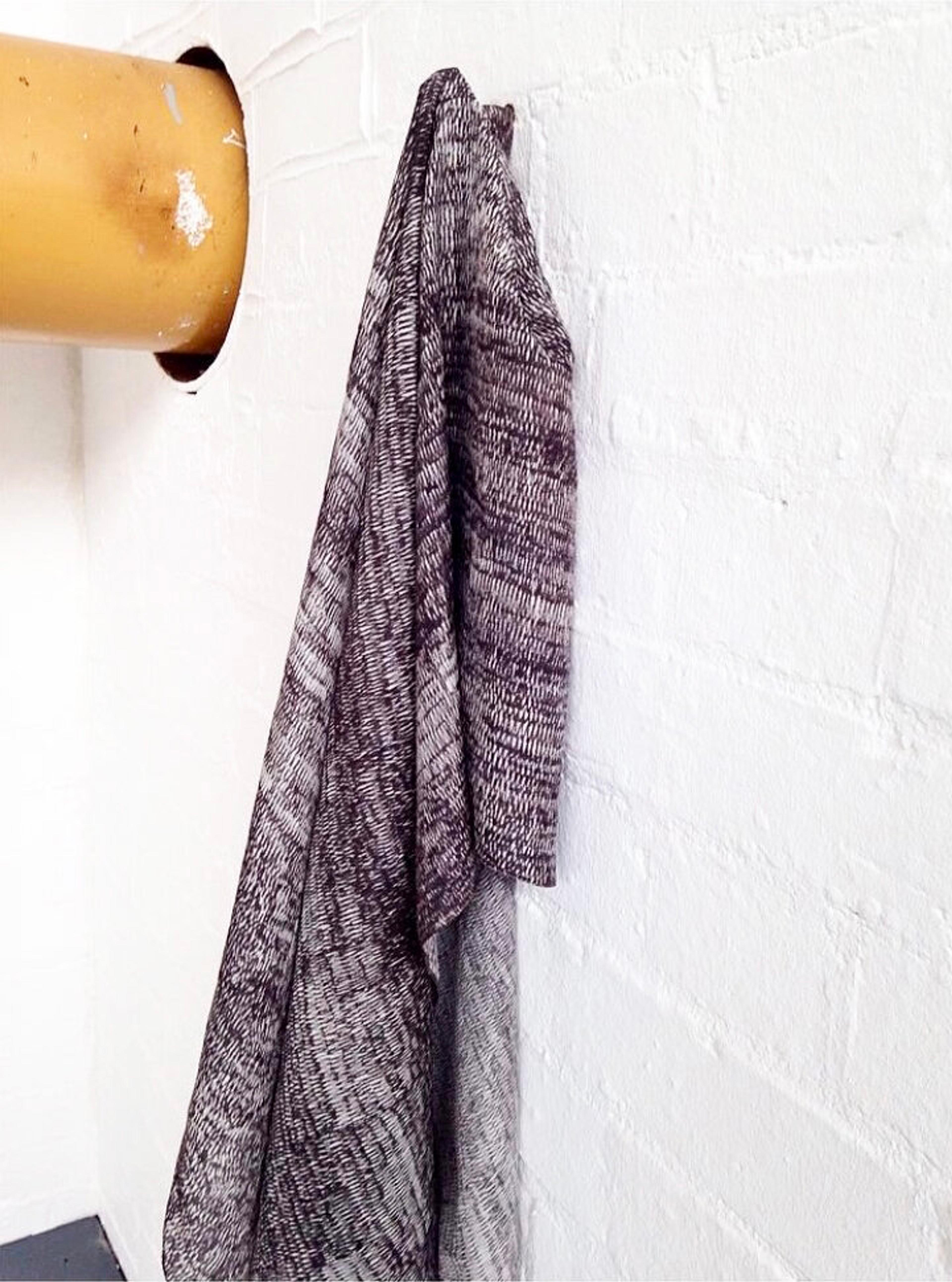
Do you have any favourite illustrators?
I have so many! Some standout illustrators I really love at the moment (and always) are: Maria Ines Gul, Eleanor Taylor, Jokum Nordstrom, John Piper, Sara Hagale and YiMiao Shih . They all work in such different ways but are experts at creating a sense of character or place.
Over the last year you have been working with us on a project, regularly meeting with a group of older people at The Peel Institute in Islington to create a mixed media installation inspired by local stories, what made you want to get involved?
I have worked on a lot of community projects over the past few years with different people. This has enabled me to see first-hand the truly meaningful impact that being part of something creative in the community can make.
I believe that art is for everyone and has the ability to connect people, give them a voice and a sense of belonging - I felt this project would encompass all of that and more. I also love that there are multiple illustrators working with different community groups in Islington at the same time, so there has been the rare opportunity to create a network via interconnecting projects. The on-going nature of this collaboration was also a huge draw as there has been time to nurture relationships and build a project which evolves over time.

How did you approach this project?
I regularly went to The Peel Institute to work with a group of older people there. Each week we tried a different form of illustration. We covered mark-making with ink, clay carving and textile design. I then tailored the sessions to be presented as if you were working in an illustrator’s studio. This was very deliberate, with the intention to equip the artists with equal measures of direction and freedom of expression. I felt it was essential to set up this type of tailored experience as the project evolved.
What came next?
As a group everyone was really creatively ambitious and we wanted to really push the boundaries of illustration.
We took inspiration from large-scale set designs and we made a mixed-media installation representing a collaborative and contemporary take on a ‘timeline’ of the New River Head site (the future home of the Quentin Blake Centre for Illustration).
This interchangeable body of work can be displayed as a full installation piece - or as a series of pop-up illustrations and ceramic sculptures. It’s very much a sensory representation of the story of New River Head, based on personal perspectives and lived experiences of the area.
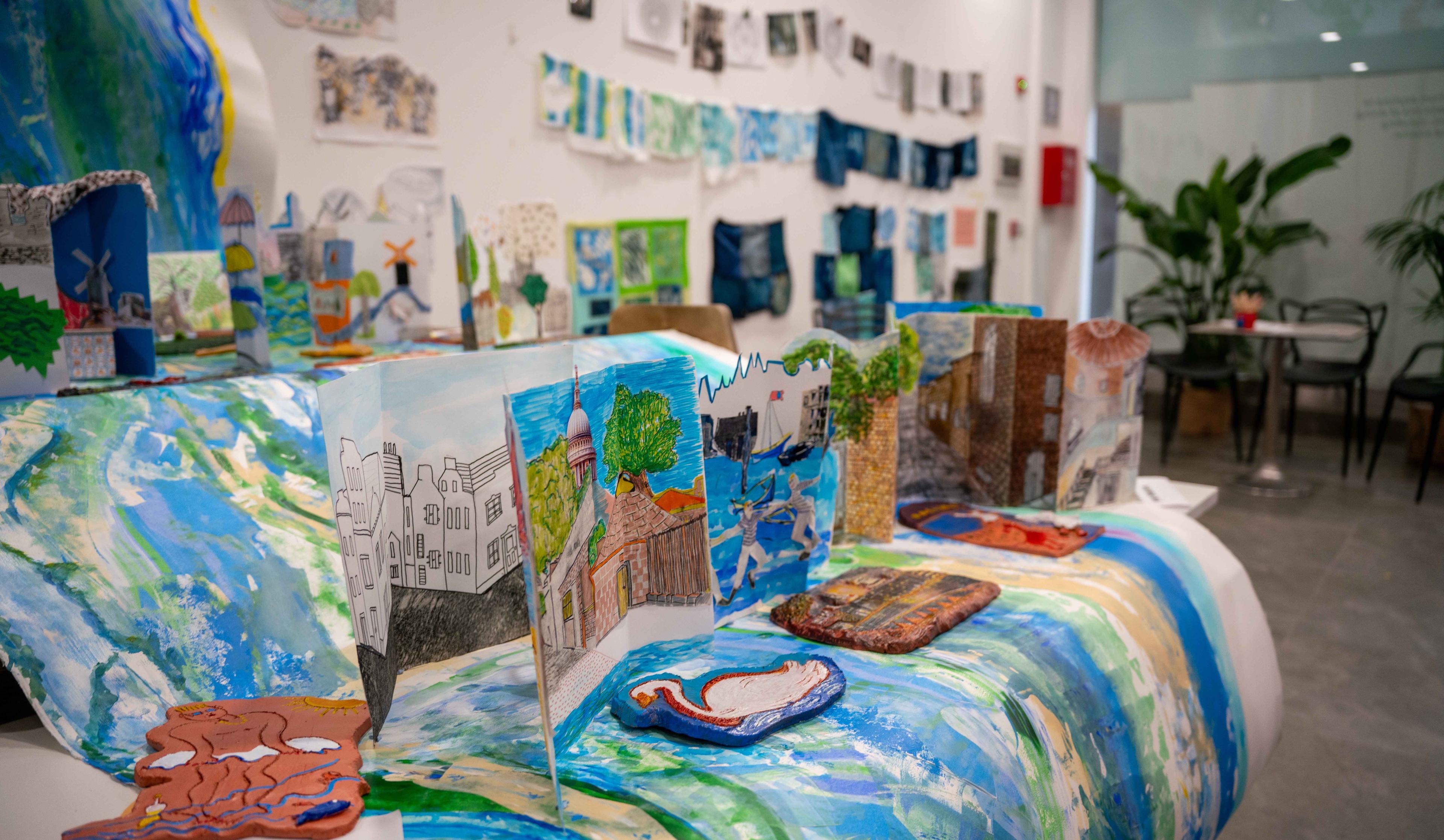
What did you enjoy the most about working together?
The group were so open and embracing of everything that I presented to them. The sense of support and collaboration was really moving. Everyone helped each other and the sense of confidence that emerged spurred everyone on and culminated in a shared sense of pride that was tangible during the pop-up exhibitions held at the end of each workshop.
What did you learn from the project?
The workshops reinforced the importance and infinite powers of illustration as a creative tool and a social one. As a concept this was not something that was new to me, but seeing it in practice time and time again makes me realise how each community project has its own identity and is entirely different in its impact.
Working with a group of individuals and their ideas and perspectives encourages you as a workshop leader to be constantly reassessing your ‘vision’ to align it with theirs – it’s a welcome challenge to navigate so many different personalities and needs. Working on a co-development directed by participants also allowed me to grow as a teacher. As much as I was there to direct I was also there to listen and absorb. I found this process really fascinating.
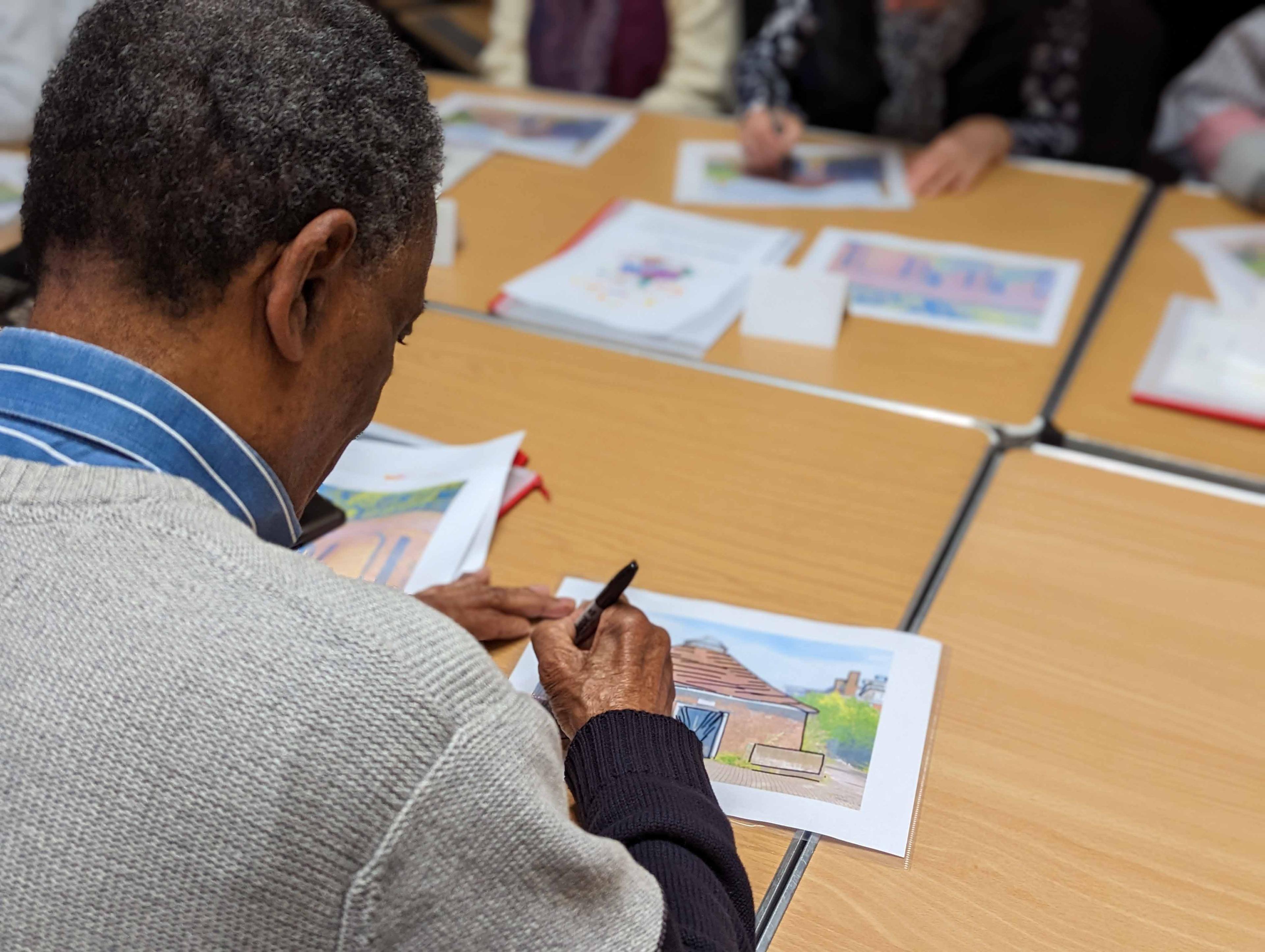
Find out more about Grace's work with The Peel Institute
Images© Grace Holliday Illustration
© Valentina Zunino
© Nifty50Digital